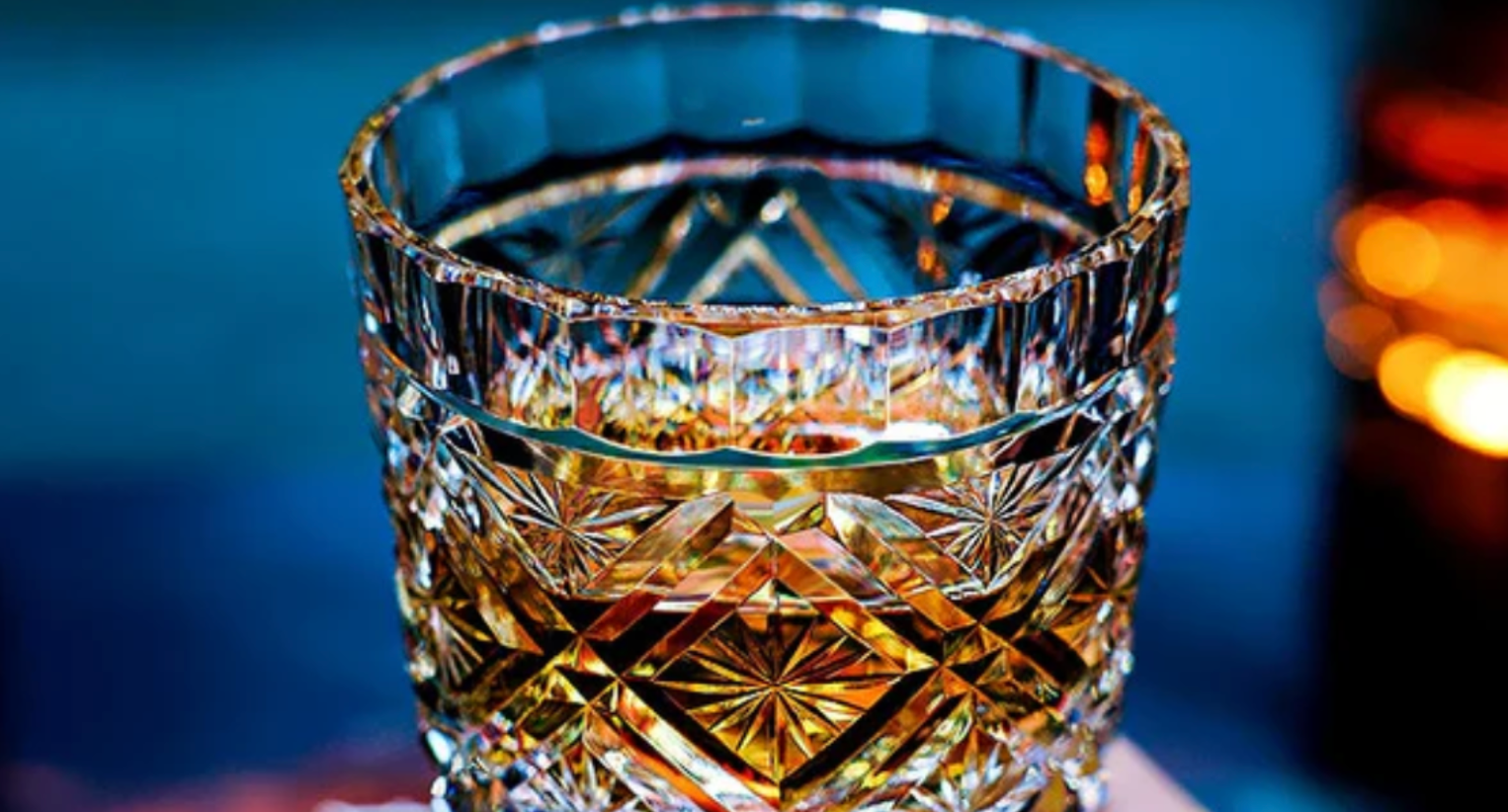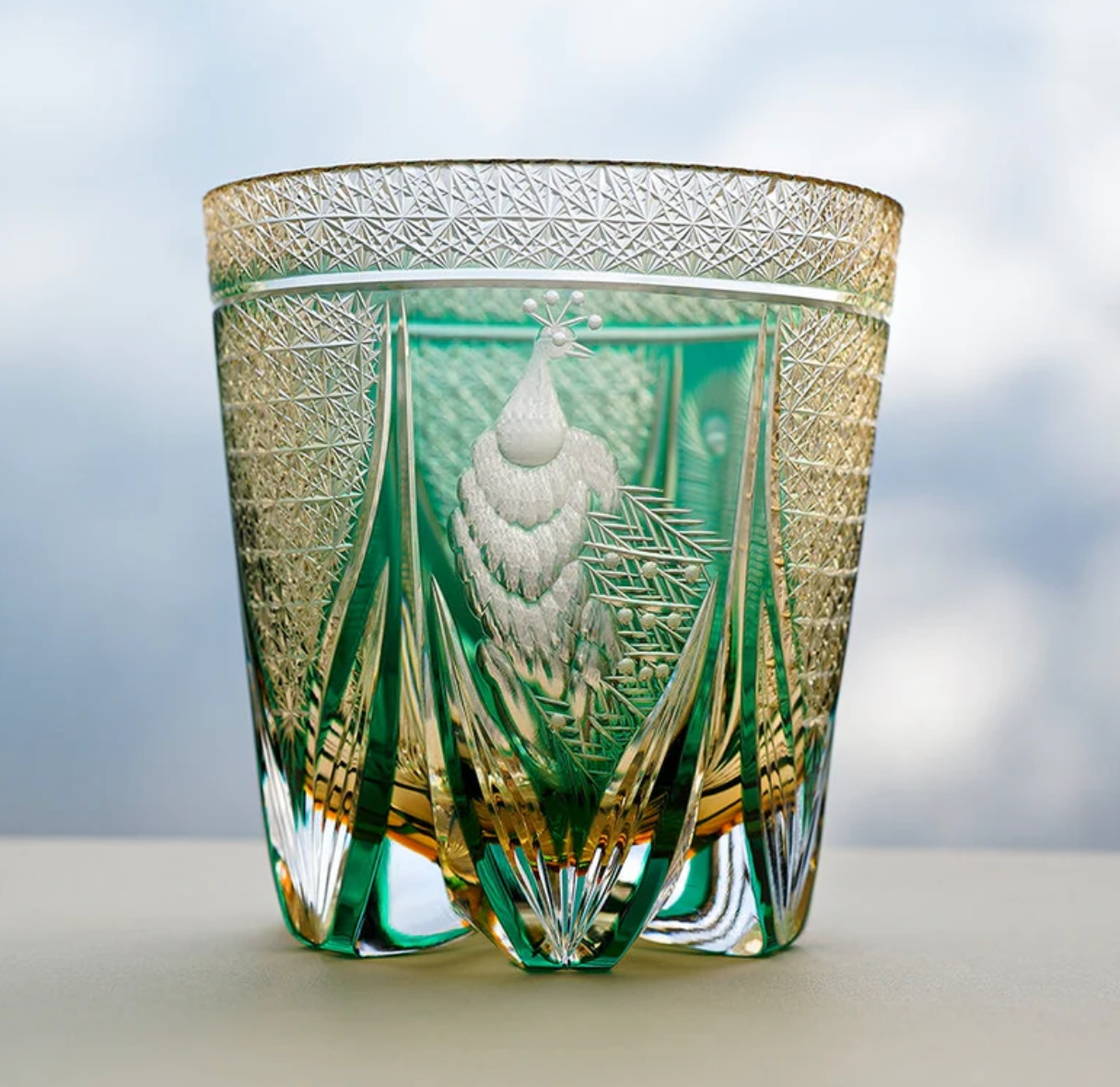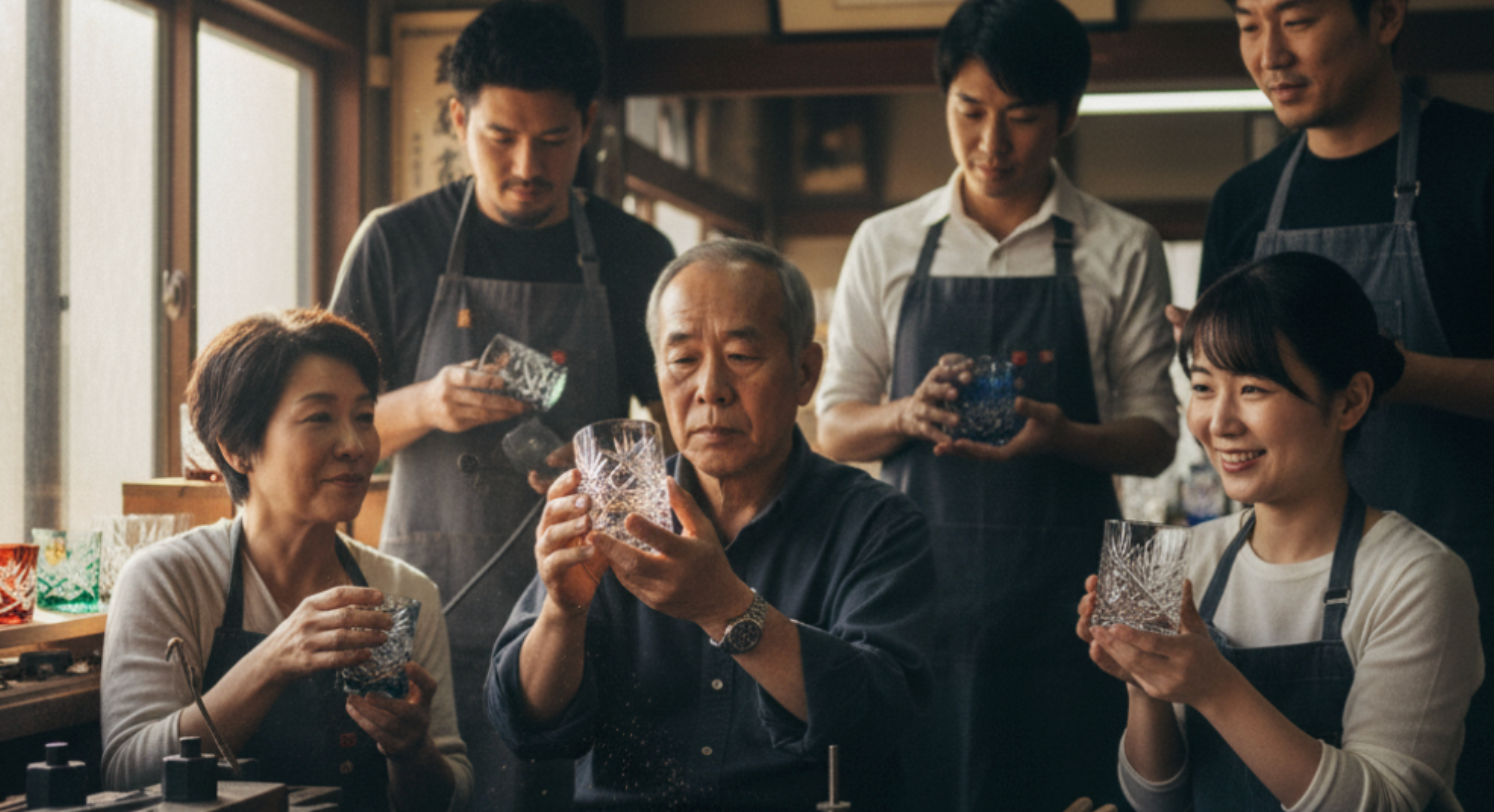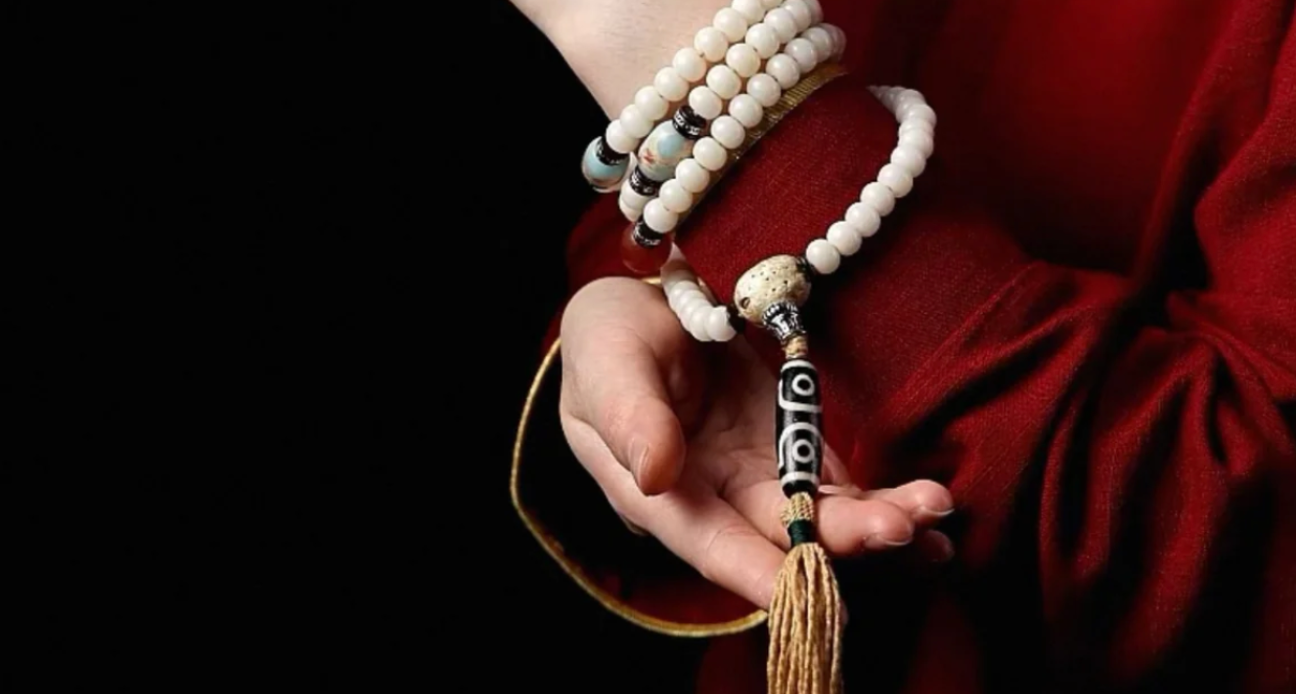
Beyond the Dazzle: Five Fascinating Facts About Edo Kiriko Whisky Glasses
When a fine whisky is poured into an Edo Kiriko glass, something magical happens. The rich amber liquid meets a dazzling network of hand-cut facets, and the glass seems to come alive with sparkling light.
More than just beautiful glassware, the Edo Kiriko whisky glass is a piece of living history. It embodies a centuries-old tradition of precise, demanding craftsmanship. If you appreciate the artistry behind your spirits, here are five fascinating facts about what makes this traditional Japanese craft a treasured luxury.
1. It Was Born in Tokyo, Not an Ancient Capital
Unlike many historic Japanese arts associated with Kyoto or other ancient capitals, Edo Kiriko has its origins in the bustling urban heart of Japan—Edo, which is now modern-day Tokyo. The craft officially began in 1834 when a glass manufacturer started using diamond dust to engrave designs on clear glass. Its style is intrinsically tied to the refined, sophisticated tastes of the metropolitan culture that flourished during Japan's isolationist period.
2. The Dazzle is a Two-Layered Secret
The dramatic contrast that defines Edo Kiriko is achieved through a technique called color casing. The artisan takes a core of clear crystal glass and carefully overlays it with a thin layer of intensely colored glass (often ruby red, deep blue, or emerald green). The final stage of cutting is the precise act of grinding and polishing through the colored layer to reveal the clear crystal underneath. It is this stark contrast of color and clarity that creates the mesmerizing visual effect.
3. All Patterns Are Cut Entirely Freehand
There are no computers, stencils, or automated systems involved in making true Edo Kiriko. The artisan relies on nothing but visual guides and intuition. They cut intricate geometric patterns by hand using rapidly rotating diamond wheels. This requires immense skill, as a single slip of the hand could ruin a piece that took hours to cut. The precision needed to maintain perfect symmetry across the entire surface demands decades of dedicated practice.
4. The Traditional Patterns Tell a Story
The cuts on the glass are not merely decorative; many are traditional motifs with deep symbolic meanings.
-
Yarai (Arrow Fence): A dense series of parallel cuts resembling a fence, symbolizing defense and protection.
-
Kiku-Tsunagi (Linked Chrysanthemums): A pattern of interconnected circles that represents the chrysanthemum, Japan's imperial flower, symbolizing longevity and prosperity.
-
Nanako (Fish Eggs): A pattern of fine, densely clustered dots, signifying abundance and a plentiful harvest.
5. It Is Officially Recognized as a Traditional Craft
The artistry of Edo Kiriko is so meticulous and culturally significant that it has been officially designated as a Traditional Craft by the Japanese Ministry of Economy, Trade and Industry. This recognition ensures that the methods, the materials, and the high standards of production are preserved and passed down to future generations. When you purchase an authentic Edo Kiriko glass, you are investing in a piece of certified national heritage.
At Oriental Artisan, we curate these authenticated masterpieces, recognizing that the joy of a fine whisky is amplified by the beauty and story of the glass it’s held in. The Edo Kiriko whisky glass is a timeless fusion of light, color, and precise human skill—a worthy centerpiece for your next intentional moment.
Explore our collection of authentic Edo Kiriko glassware and bring a piece of sparkling Japanese heritage to your home.




Leave a comment
This site is protected by hCaptcha and the hCaptcha Privacy Policy and Terms of Service apply.